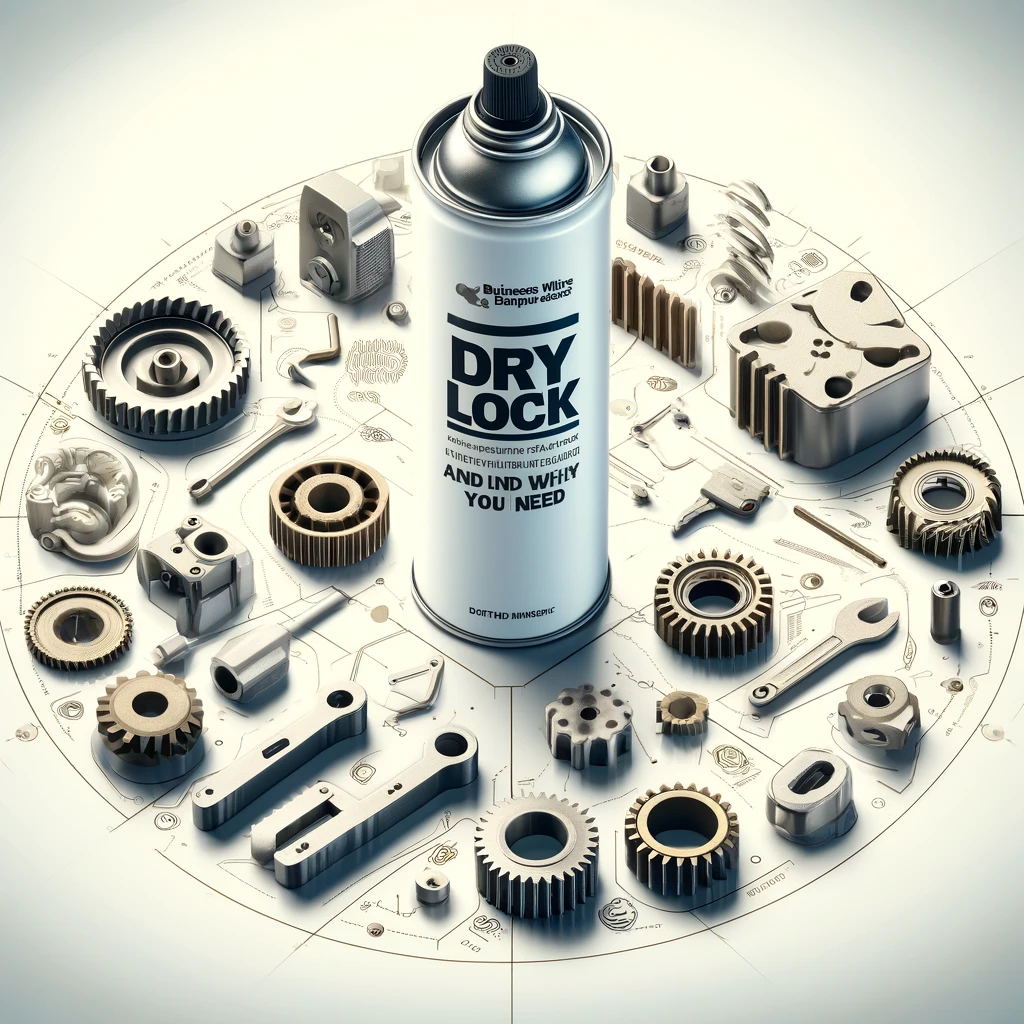Dry lock lubricant is essential for maintaining the efficiency and lifespan of various mechanical components. This article will explain what dry lock lubricant is, how it works, and why it is crucial for your equipment.
What Is Dry Lock Lubricant?
Dry lock lubricant is a type of lubricant that provides a protective layer without leaving a wet or greasy residue. Unlike traditional lubricants, which can attract dirt and grime, dry lock lubricant keeps surfaces clean and smooth.
How Does Dry Lock Lubricant Work?
Dry lock lubricant works by forming a thin, dry film on the surface it is applied to. This film reduces friction and wear, protecting the components from damage. The lubricant can withstand high temperatures and resist water, making it ideal for various applications.
Why Use Dry Lock Lubricant?
Using dry lock lubricant has several benefits:
- Reduces Friction: It lowers the friction between moving parts, which decreases wear and tear.
- Prevents Corrosion: The protective layer guards against rust and corrosion.
- Resists Contamination: It does not attract dust or dirt, keeping the surfaces clean.
- Extends Lifespan: By reducing wear and tear, it prolongs the life of the equipment.
Applications of Dry Lock Lubricant
Dry lock lubricant is used in many industries, including automotive, manufacturing, and electronics. Here are some common applications:
Automotive
In the automotive industry, dry lock lubricant is used on locks, hinges, and sliding mechanisms. It ensures smooth operation and prevents parts from seizing up.
Manufacturing
Manufacturing processes often involve machinery with moving parts. Dry lock lubricant is applied to reduce friction and wear, ensuring efficient operation and longer machine life.
Electronics
In electronics, dry lock lubricant is used on connectors and switches. It helps maintain good electrical contact and protects against corrosion.You can also read Locksmith Tips: What You Need to Know for Home Safety.
How to Apply Dry Lock Lubricant
Applying dry lock lubricant is simple. Follow these steps for the best results:
- Clean the Surface: Remove any dirt, grease, or old lubricant.
- Shake the Can: If you are using a spray, shake the can well before use.
- Apply Evenly: Spray or apply the lubricant evenly on the surface.
- Let It Dry: Allow the lubricant to dry completely before using the equipment.
Choosing the Right Dry Lock Lubricant
When selecting a dry lock lubricant, consider the following factors:
- Temperature Range: Ensure the lubricant can withstand the operating temperatures of your equipment.
- Material Compatibility: Check that the lubricant is compatible with the materials of the components.
- Application Method: Choose a lubricant that is easy to apply and suitable for your specific needs.
Common Issues with Dry Lock Lubricant
While dry lock lubricant is highly effective, there are some common issues to be aware of:
- Over-Application: Using too much lubricant can lead to build-up, which might affect performance.
- Incompatibility: Some lubricants may not be suitable for certain materials, so always check compatibility.
- Improper Application: Not cleaning the surface properly before application can reduce the effectiveness of the lubricant.
Why Regular Maintenance is Important
Regular maintenance using dry lock lubricant can prevent many problems. Here are a few reasons why it’s important:
- Prevents Wear: Regular lubrication reduces friction and prevents excessive wear.
- Avoids Downtime: Proper maintenance ensures your equipment runs smoothly, reducing the risk of breakdowns.
- Saves Money: Preventive maintenance can save you money on repairs and replacements.
FAQs about Dry Lock Lubricant
What is the difference between dry lock lubricant and traditional lubricant?
Dry lock lubricant forms a dry film, while traditional lubricants are usually wet or greasy. Dry lock lubricants do not attract dirt, making them cleaner to use.
Can dry lock lubricant be used on all types of materials?
Dry lock lubricant is compatible with many materials, but it’s essential to check the product specifications to ensure compatibility with your specific application.
How often should I apply dry lock lubricant?
The frequency of application depends on the usage and environment of the equipment. Refer to the manufacturer’s guidelines for the best results.
Conclusion
Dry lock lubricant is a vital tool for maintaining the efficiency and longevity of your mechanical components. By reducing friction, preventing corrosion, and resisting contamination, it ensures smooth operation and extends the lifespan of your equipment. Regular maintenance using dry lock lubricant can save you time and money in the long run. Choose the right lubricant for your needs, apply it correctly, and enjoy the benefits of a well-maintained system.



